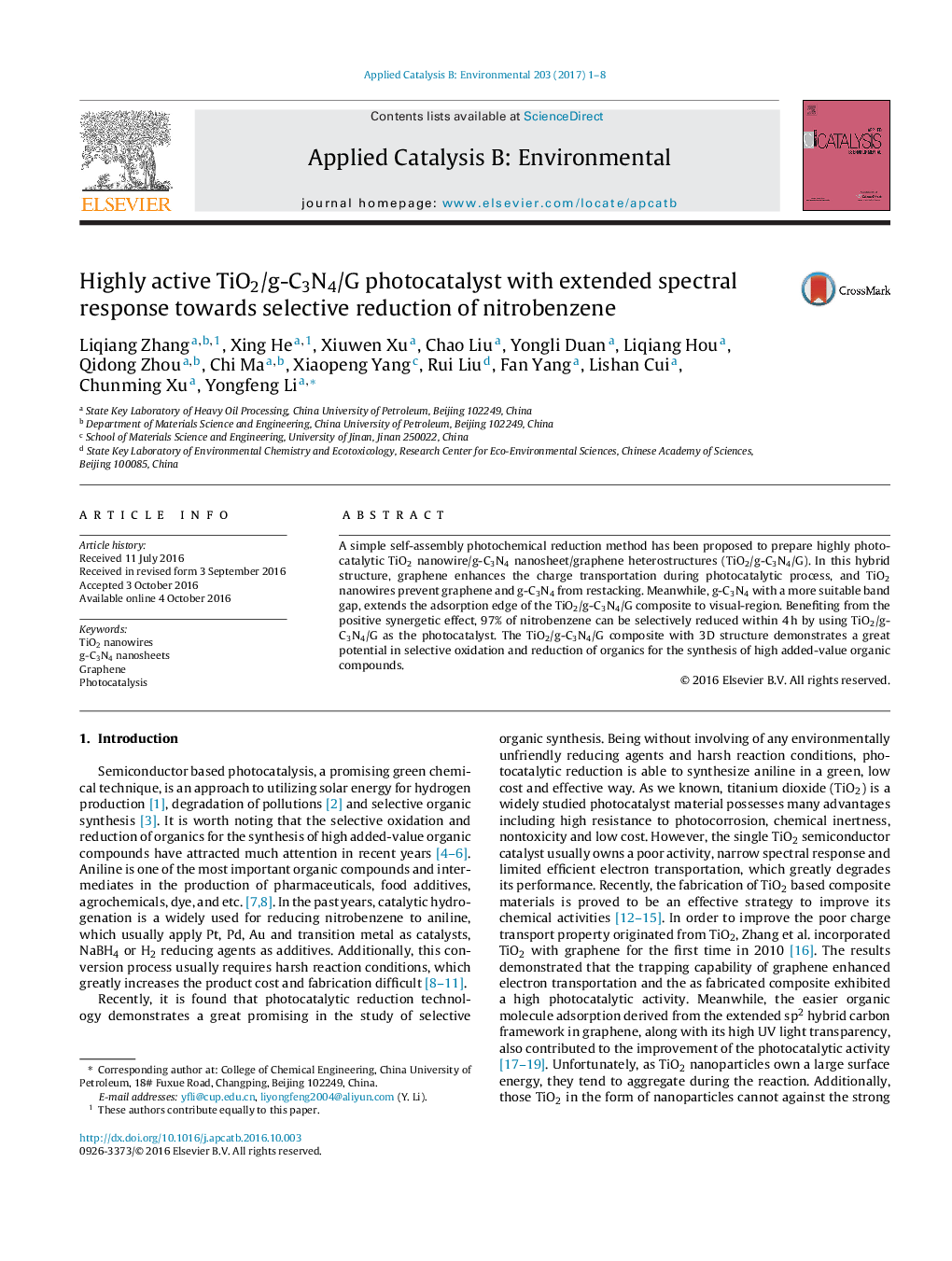| Article ID | Journal | Published Year | Pages | File Type |
|---|---|---|---|---|
| 6454416 | Applied Catalysis B: Environmental | 2017 | 8 Pages |
â¢TiO2/g-C3N4/G was synthesized by photochemical reduction self-assembly methods.â¢Noticeable photocurrent response exhibits during both UV-region and visual-region.â¢High photocatalytic activity and selectivity show in the reduction of nitrobenzene.â¢Synergistic effect facilitate the separation of photogenerated charges.
A simple self-assembly photochemical reduction method has been proposed to prepare highly photocatalytic TiO2 nanowire/g-C3N4 nanosheet/graphene heterostructures (TiO2/g-C3N4/G). In this hybrid structure, graphene enhances the charge transportation during photocatalytic process, and TiO2 nanowires prevent graphene and g-C3N4 from restacking. Meanwhile, g-C3N4 with a more suitable band gap, extends the adsorption edge of the TiO2/g-C3N4/G composite to visual-region. Benefiting from the positive synergetic effect, 97% of nitrobenzene can be selectively reduced within 4Â h by using TiO2/g-C3N4/G as the photocatalyst. The TiO2/g-C3N4/G composite with 3D structure demonstrates a great potential in selective oxidation and reduction of organics for the synthesis of high added-value organic compounds.
Graphical abstractDownload high-res image (241KB)Download full-size imageTiO2 nanowire/g-C3N4 nanosheet/graphene heterostructures (TiO2/g-C3N4/G) with highly photocatalytic activity has been prepared via a simple self-assembly photochemical reduction method. Benefiting from the positive synergetic effect, 97% of nitrobenzene can be selectively reduced within 4Â h by using TiO2/g-C3N4/G as the photocatalyst.
